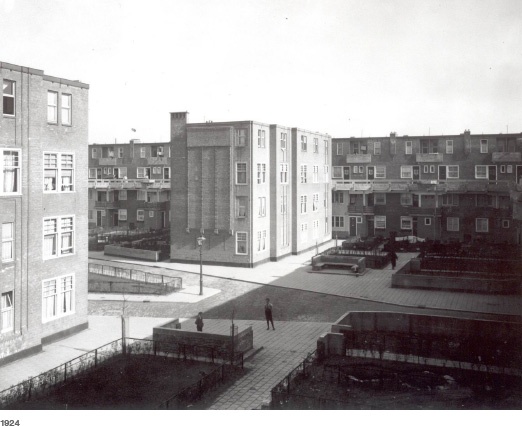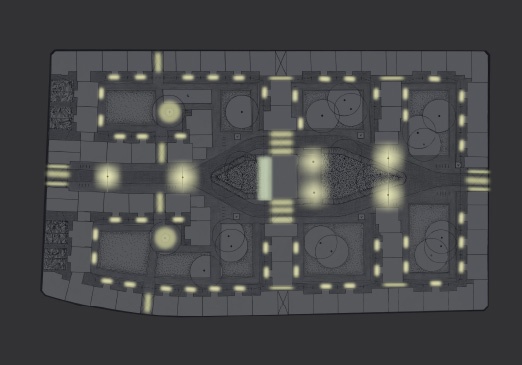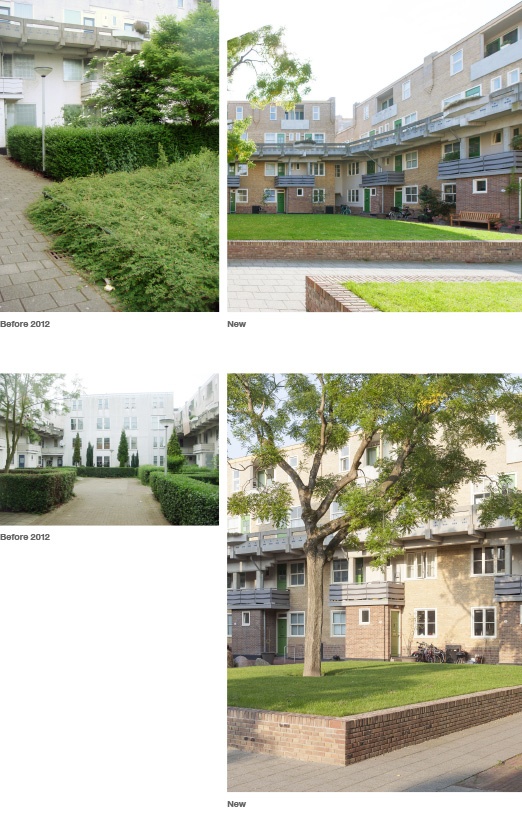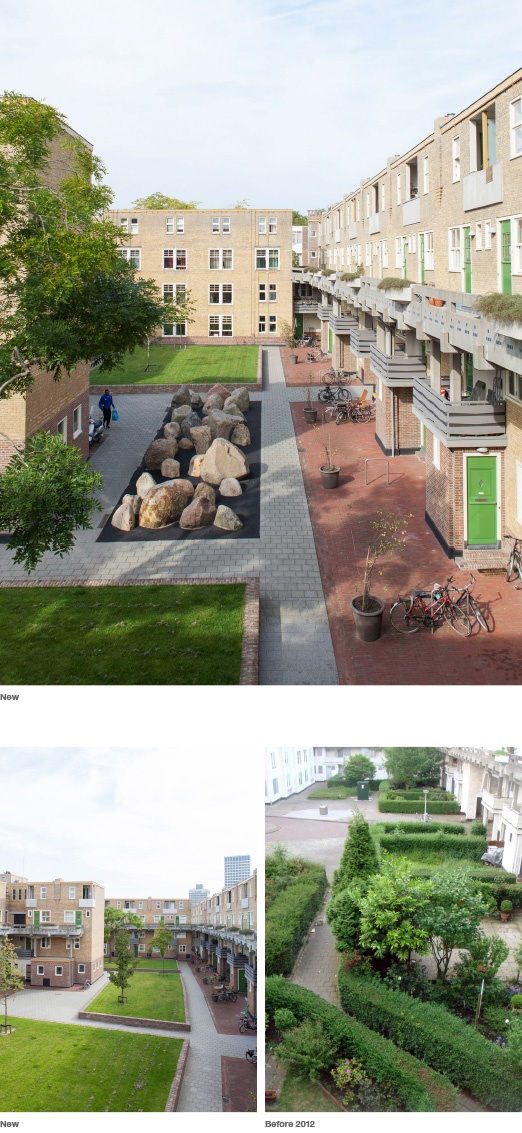
From an urban planning and architectural point of view this housing complex from 1922 by Michiel Brinkman was innovative for its time and became world famous because of that. It had been modernized in the nineteen eighties but needed to be renovated again, preferably in a way more respectful of the original concept and architecture.
When built this complex was innovative because of the introduction of a street at a higher level and because of orienting all the houses towards the inner green courtyard without traffic instead of towards the surrounding streets.

The courtyard was zoned in three areas. A public street for utilities and emergency services going right through the middle, a few small green areas for collective use and private gardens surrounded by hedges. In socially deprived areas private gardens are very vulnerable.


They were removed for the benefit of large collectively used areas in the form of risen grassfields to make these areas more special, cleaner and in that way more usable. The openness also creates a sence of security. The paving pattern and the placement of planters and bikestands suggests an area to be used privately, adjacent to the houses.
The introduction of more large trees gives the courtyard its park like setting. It also leaves the groundfloor area open and safe and the street on the higher level, from which you see a green and lush ambience in the mass of leaves.

The lighting plan reinforces the division between the public, collective and private. Normal street lights hang over the main street and lightfixtures are directly connected with the building and its entrances.



Client
Woonstad Rotterdam
In collaboration with
Hebly Theunissen Architecten
Molenaar van Winden Architecten
Photography
Emilio Troncoso Larrain